
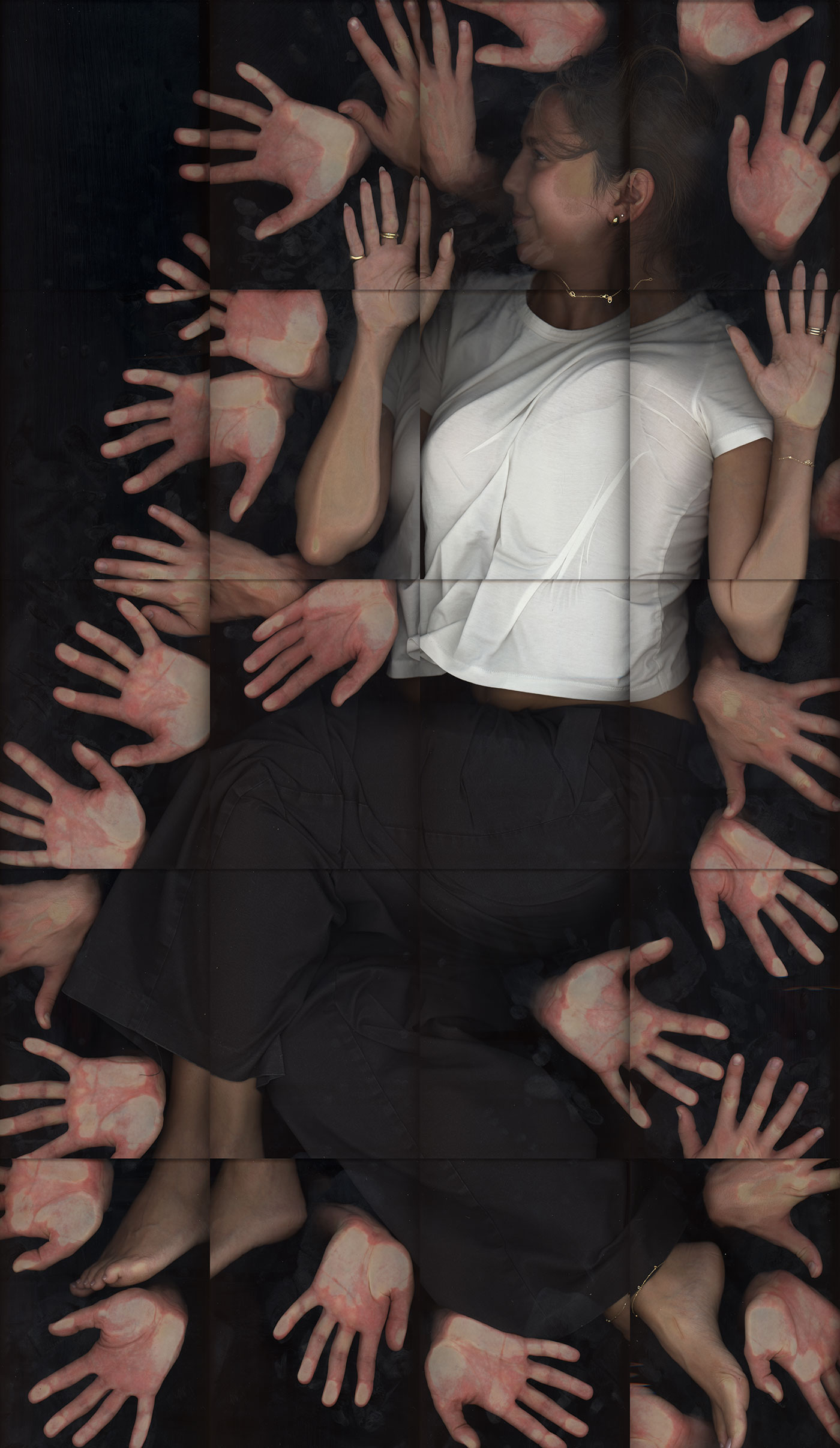
A camera flatters. It gives you an array of choices: an angle, a pose, the distance that allows you to shape how you appear. The scanner allows none of that.
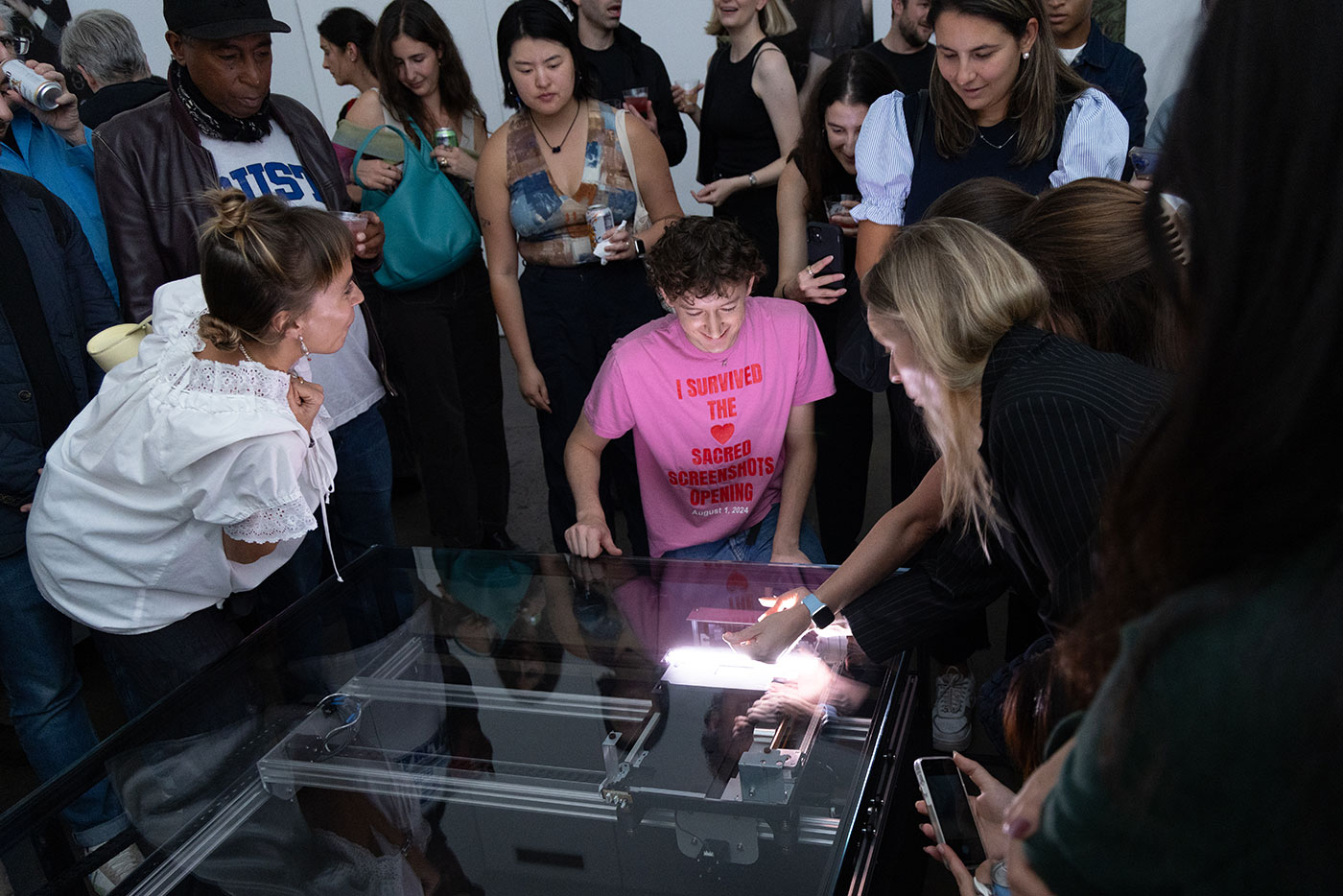
This is the generative condition — even when we follow the system, the output exceeds our intention. Guy Debord’s line in The Society of the Spectacle echoes here: in a culture saturated with images, the ordinary cannot help but become theater.
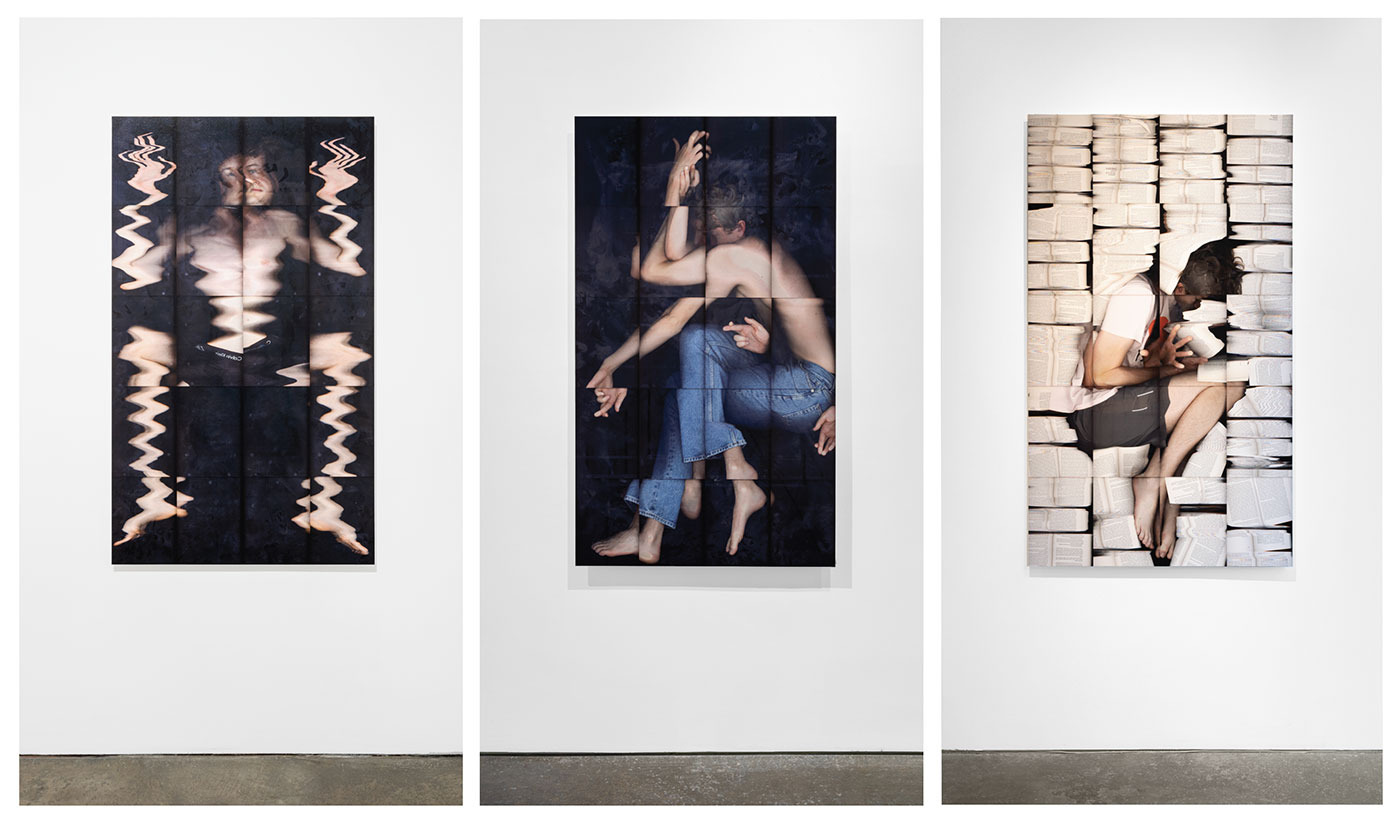
The title “Replacement Character” points to the small glyph that appears when data cannot be read. Even in their precision, the scans admit failure. Seams remain visible, fragments stitched imperfectly, meaning never entirely secure.
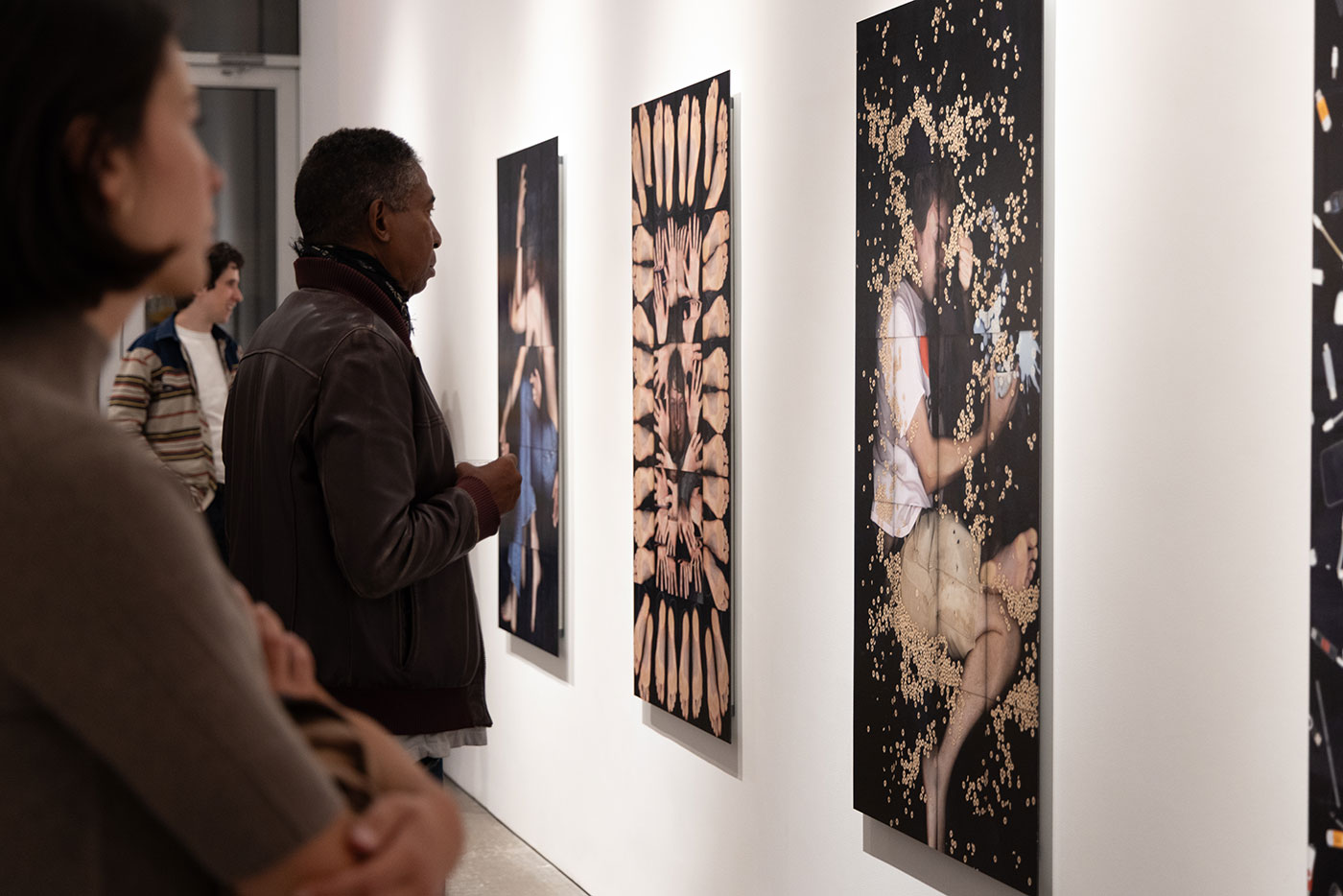
“Replacement Character” reframes portraiture for a networked age. These are not likenesses in any traditional sense. Nor are they performances we can fully control. They are propositions: that presence is always provisional, and that every act of being seen is also, inevitably, an act of being misread.

Experiencing the plotter-scanner is intimate. Its elevator eyes look you up and down as you’re splayed out, horizontal on the glass for a lengthy five minutes. It’s uncomfortable, like having a conversation with someone who doesn’t know the socially appropriate time to break eye contact. It forces you into that squirming mental state, when the staring has gone on for far too long.
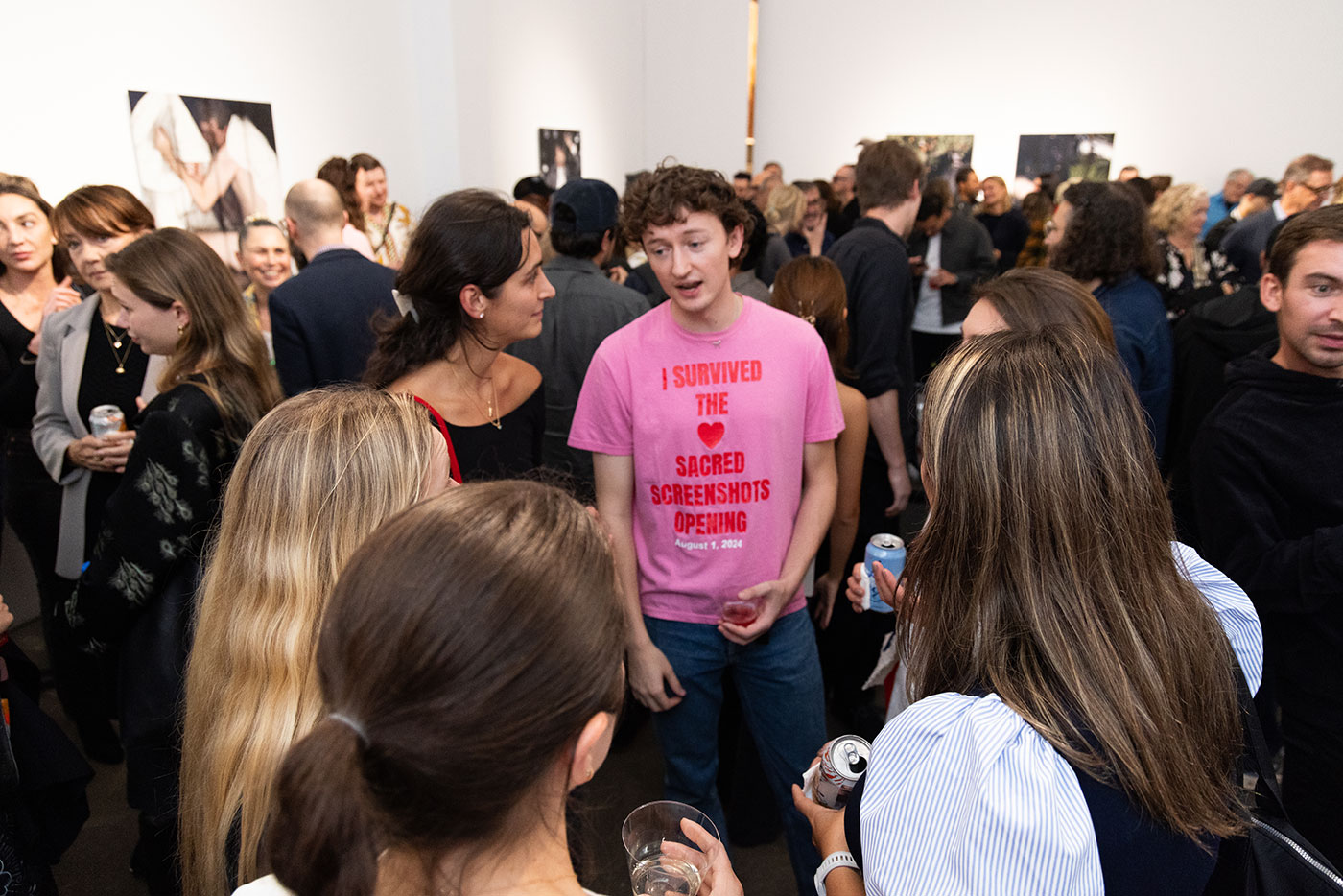
In a clip I found on YouTube, Lucky Luke draws his gun, spins around, and fires a shot at his shadow behind him. His shadow then peels off the wall and promptly disappears in defeat.
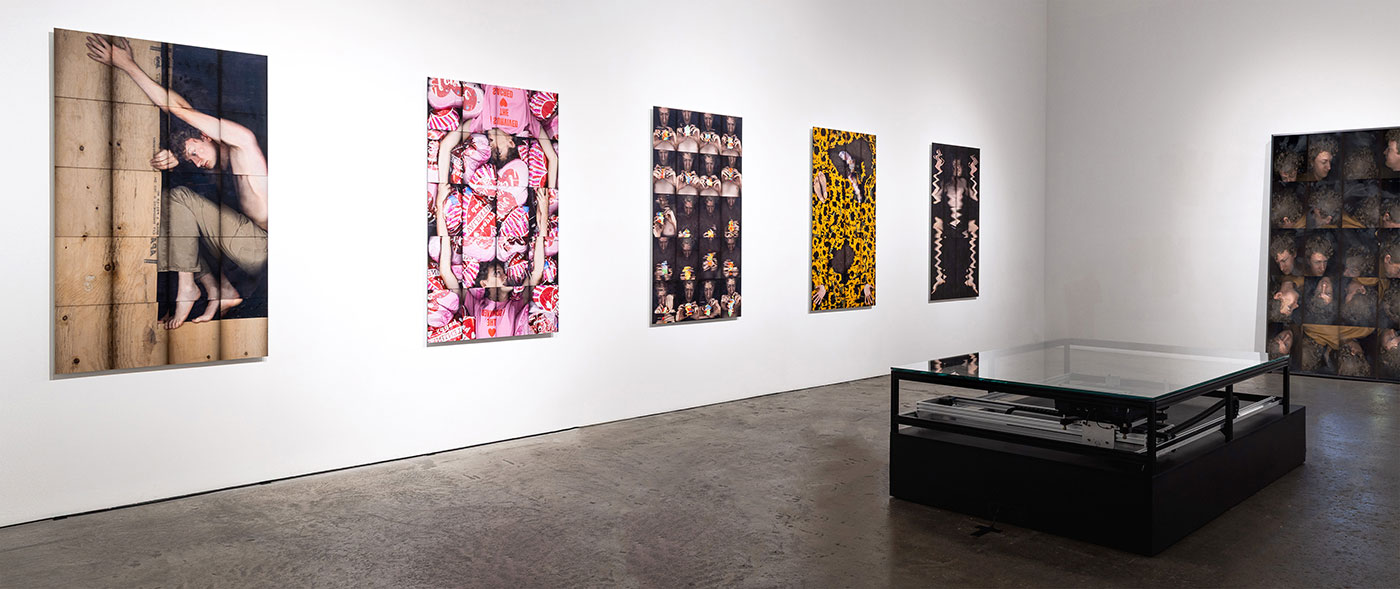
“To photograph people is to violate them, by seeing them as they never see themselves … Just as a camera is a sublimation of the gun, to photograph someone is a subliminal murder — a soft murder, appropriate to a sad, frightened time.”
With thanks to Sofia Garcia, Maya Man, Luke Shannon, Emily Edelman, and Adam Heft Berninger of Heft Gallery.
Maya Man is an artist focused on contemporary identity culture on the internet. Her websites, generative series, and installations examine dominant narratives around femininity, authenticity, and the performance of self online. She has exhibited internationally at the Whitney Museum of American Art and bitforms, New York; SOOT, Tokyo; Verse, London; HEK, Basel; and the online platform Feral File. She has been invited to speak on her work at The New Museum, New York; The V&A and Tate Britain, London; and MOCA, Los Angeles. She organizes a curatorial project called HEART, previously run out of her studio in Soho. She is online at mayaontheinter.net.
Sofia Garcia is a generative art dealer and curator based in Miami, Florida. As the award-winning founder of ARTXCODE, she has been a leading advocate of the creative coding ecosystem as an educator, author, and curator for close to a decade. Her latest artistic endeavors explore her relationship with front-end web development and the abstracted realities of creativity in the age of computation. She proudly sits on the board of directors at Code/Art, where she has been championing young girls and women’s introduction to creative coding since 2015.

